Transit type Rapid transit Number of stations 10(19 total planned) | Number of lines 2 | |
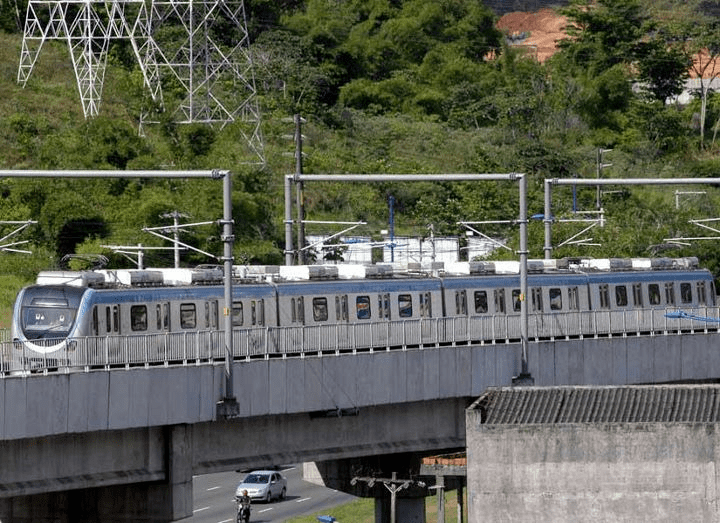 | ||
Website CCR Metrô Bahia (Portuguese) | ||
The Salvador Metro (Portuguese: Metrô de Salvador, commonly called Metrô) is a metro system and project for the Bahia state of Brazil, specifically in the city of Salvador. The current system includes a fully open 11.9-kilometre (7.4 mi), eight-station Line 1 (Lapa-Pirajá), which began partial public service on June 11, 2014.
Contents
- Background
- Route
- Stations
- June 2014
- April 2015
- November 2015
- December 2015
- March 2016
- October 2017
- References
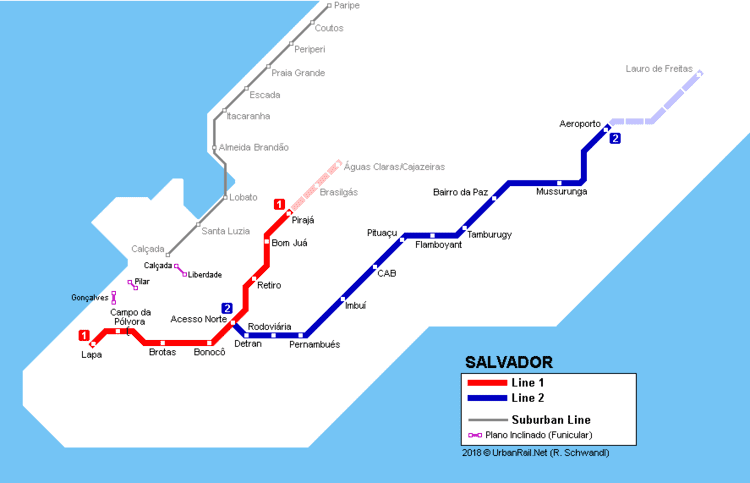
Line 2 (Acesso Norte-Aeroporto-Lauro de Freitas) is currently under construction with projected opening dates over the coming three years.
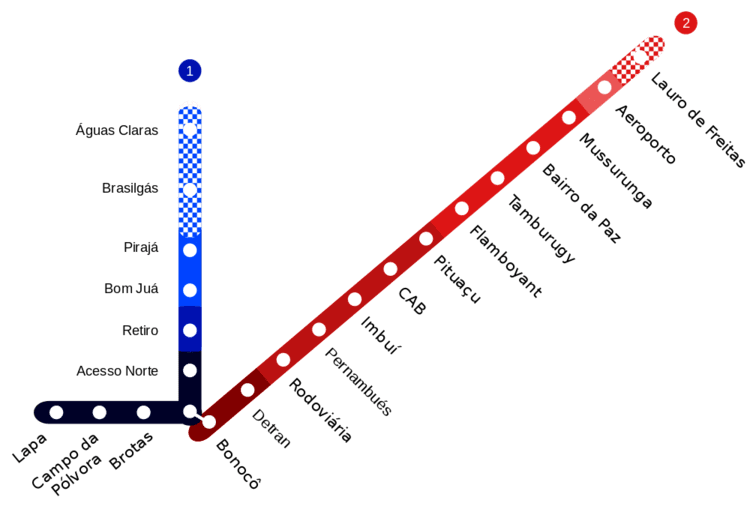
Additionally, Salvador, Brazil is served by a 14-kilometre (8.7 mi) metre gauge (1,000 mm (3 ft 3 3⁄8 in)) railway line known as the Suburban Line (Calçada-Paripe) that does not connect with the Metro.
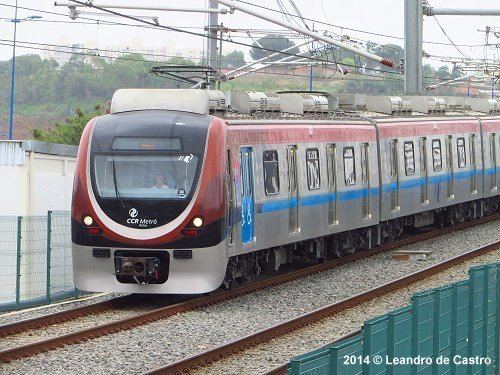
Background
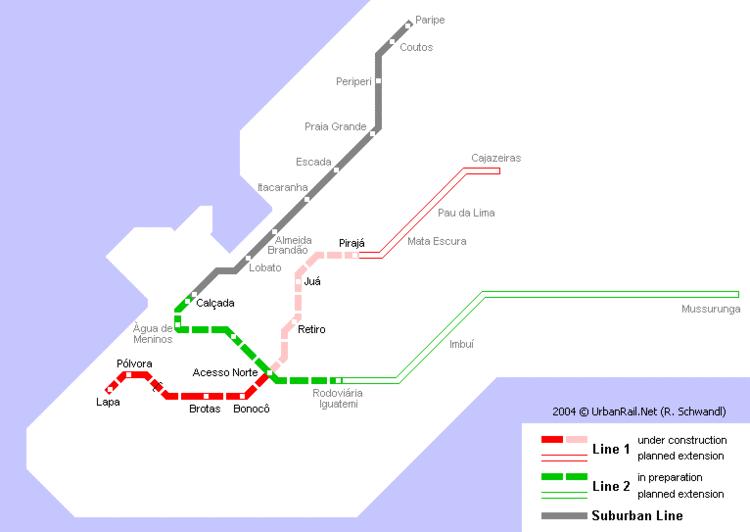
The project is a Build, Operate, and Transfer (BOT) scheme for the operation of the urban rapid rail transportation system in the municipality of Salvador da Bahia, and includes the supply and installation of rolling stock and signaling equipment, and commercial operation of the system for the 25-year concession. Each train, consisting of four cars, has the capacity to carry 1,250 passengers.
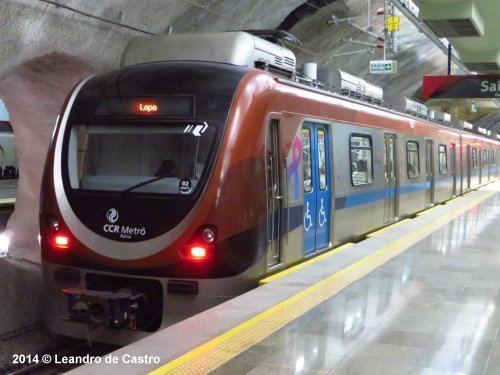
Currently, the urban transportation system in Salvador is underdeveloped and largely road-based, causing significant congestion and delays. This level of road-based transport has significant impacts on the local economy and environment. For this reason the municipality and the state, together with the World Bank, have been involved since 1992 in the design and implementation of a transportation strategy. The international standard gauge is 3kV overhead power supply. And Built by a consortium of Siemens and Camargo Corrêa and Andrade Gutierrez of Brazil.
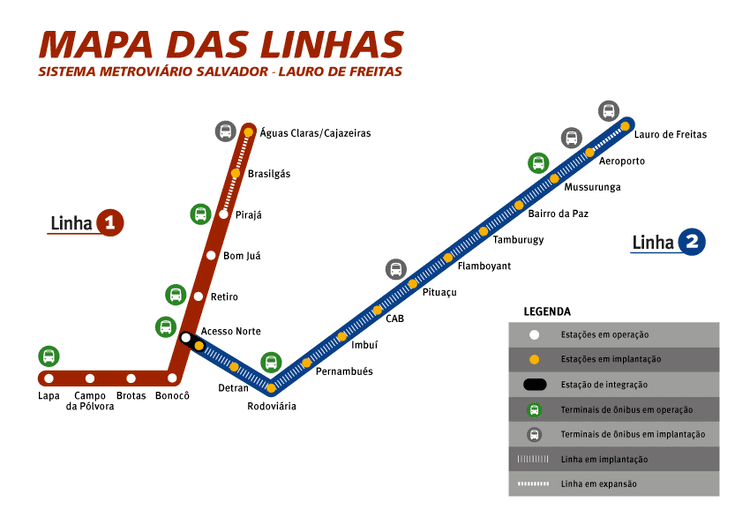
This project is an integral part of the strategy. The project aims to improve the quality of public urban transportation in the area by connecting currently excluded low-income neighborhoods, and by furthering the development of a fully integrated urban transportation system.
Salvador Metro system is one of the systems of urban mobility that were deployed for the 2014 FIFA World Cup. The connection of Line 2 with Line 1 of Salvador Metro contributes to connect the International Airport to Downtown Salvador and the Fonte Nova Stadium. The new Line 2 of Salvador Metro integrates the metro stations of the Rótula do Abacaxi and the beach city of Lauro de Freitas in the metropolitan area, passing through the Salvador International Airport, with the Airport metro station.
Route
The current route of Line 1 begins at the underground Lapa station, and runs for 1.4 kilometres (0.87 mi) in subway tunnels, before emerging to the surface. Brotas station (which serves the Itaipava Arena Fonte Nova stadium) is elevated, while Acesso Norte Station and Retiro stations are at-grade.
With Line 1 fully operational over its whole course from Lapa to Pirajá as of December 2015, it is 11.9-kilometre (7.4 mi) long (with 1.4 kilometres (0.87 mi) underground, 4.8 kilometres (3.0 mi) elevated, with the rest at grade), and serves eight stations.
Stations
The following lists the current, and planned, stations of the Salvador Metro, by their opening date:
